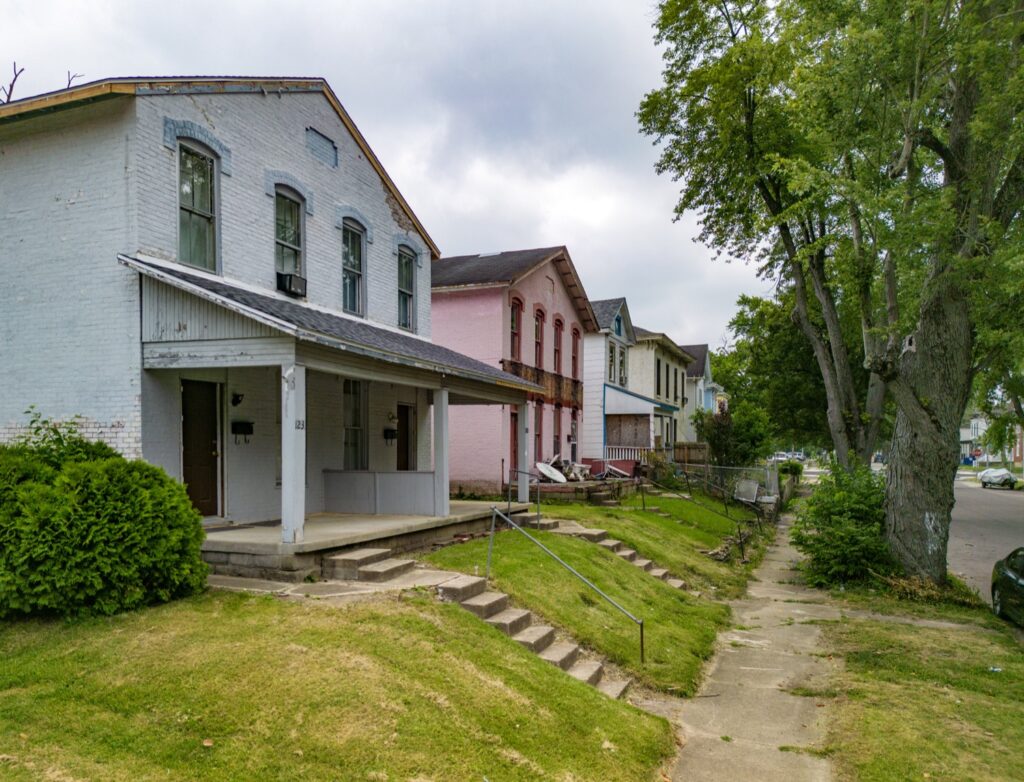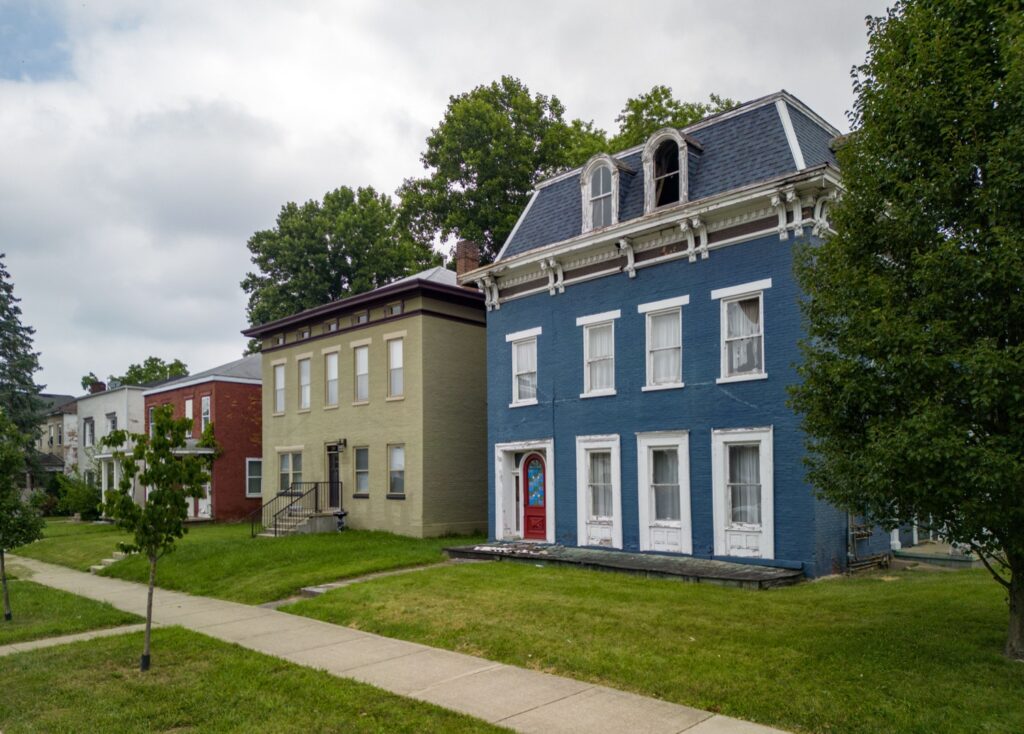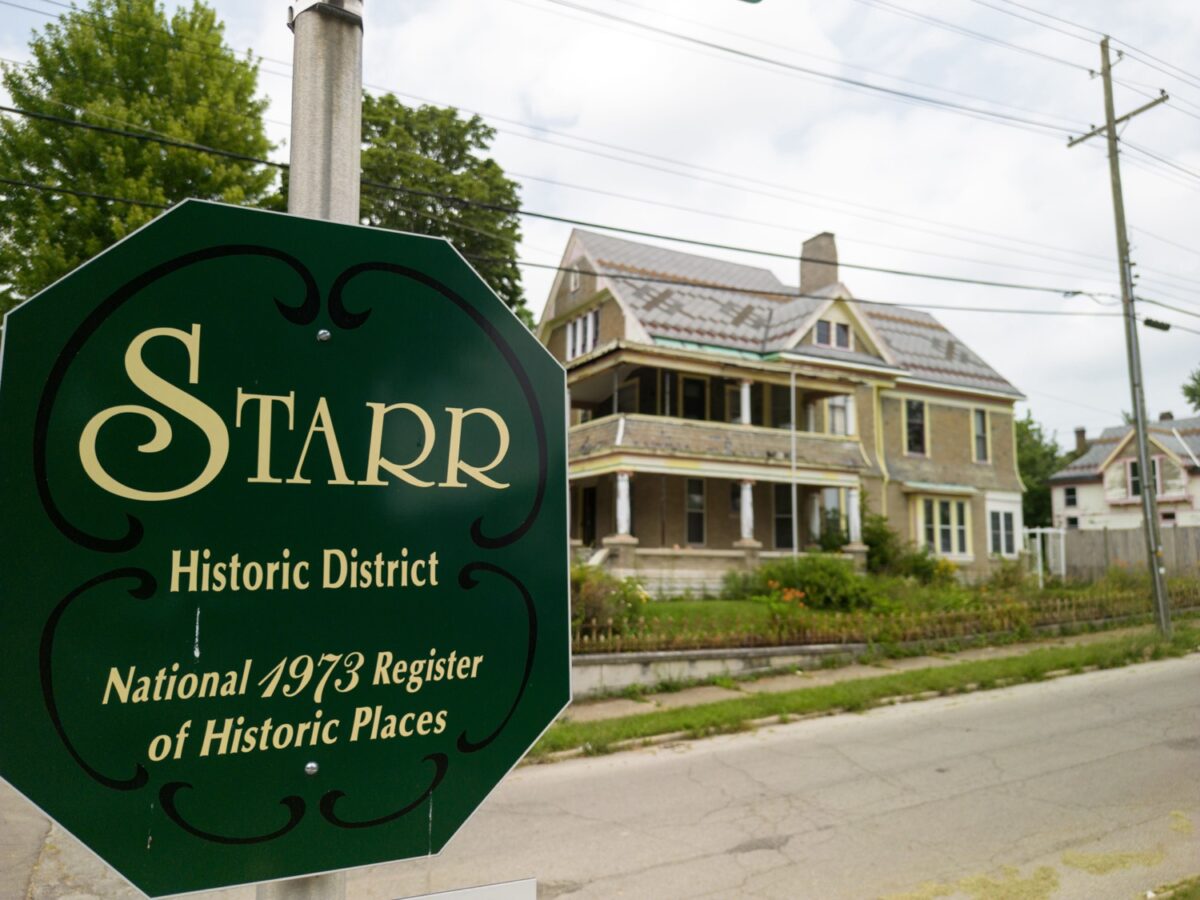A Wayne County neighborhood is again on Indiana Landmarks’ statewide 10 Most Endangered list, but optimism is growing among several historic preservation leaders as progress is being made.
The Starr Historic District is bounded by North A, North E, North 10th and North 16th streets in Richmond.
Indiana Landmarks officials say that architecture enthusiasts previously considered the Starr district one of the Midwest’s best-preserved Victorian-era neighborhoods.
However, the declining area is a repeat entry on Indiana Landmarks’ endangered list, which it describes as highlighting “historic places on the brink of extinction and too important to lose.”
The Starr district, developed in the 1860s as an elite residential neighborhood, was named for early residents Charles and Elizabeth Starr.
In more recent years, many of those large homes have been divided into multiunit rental housing, much of it controlled by negligent or absentee owners, Indiana Landmarks said in a news release.
Although revitalization is on the rise in downtown Richmond, it has yet to spread to the Starr neighborhood in any substantial way, and the district’s National Register status offers no protection against neglectful property owners, the release said.

Indiana Landmarks officials note that several local stakeholders are trying to turn the tide, promoting community engagement initiatives and advocating for improved code enforcement.
They also said city leaders have been spurred by last year’s endangered list and are taking steps toward helping the neighborhood. One of those steps, designating the area as a local historic district, would provide a measure of protection against demolition, the release said.
To help, Indiana Landmarks has invested in neighborhood properties and relocated its Eastern Regional Office to the district’s formerly endangered Reid Memorial Presbyterian Church at 1004 N. A St. The church is now operated by the Reid Center as a cultural performance venue and community center.
Brittany Miller, Indiana Landmarks’ Eastern Regional Office director, said she’s really excited to see progress happening for the Starr neighborhood.
Miller said she’s experienced great partnerships with local groups, including the city of Richmond’s Historic Preservation Commission, Richmond Columbian Properties, Richmond Neighborhood Restoration and the Reid Center.
“People are paying attention and making efforts to save this neighborhood,” Miller said.
Statewide list
To find out more about each of Indiana Landmarks’ 10 Most Endangered, including Richmond’s Starr Historic District, visit indianalandmarks.org/10-most-endangered or call 800-450-4534.
Dustin Purvis, planning director for the City of Richmond’s Department of Infrastructure and Development, said the renewed emphasis on the Starr neighborhood over the past year has highlighted it as an essential part of the revitalization efforts underway in the adjacent downtown and depot districts.
Purvis said several recent, encouraging developments should directly or indirectly benefit the neighborhood.
For instance, Purvis recently learned of a couple who moved to Richmond as part of the Economic Development Corp. of Wayne County’s Make My Move program that have since bought two historic homes in the Starr district that they plan to restore.
He said this renewed emphasis on Starr has also highlighted the work of several of the neighborhood’s longtime stewards, like Matt Stegall of Stegall-Berheide-Orr and his preservation work with Richmond Columbian Properties, and Ardene Schoeffler, who owns Olde North Chapel and some rental properties.
Purvis said the Starr district is also within the city’s Urban Enterprise Zone, and the Urban Enterprise Association recently began discussions about how to support residents within the zone who wish to upkeep their homes.

A visible example is RNR’s current renovation of the Dulin House at 215 N. 12th St.
Roxie Deer, RNR executive director, said quick progress is being made, and exterior work should begin soon along the busy street.
RNR’s also beginning to identify a pipeline of houses in the Starr neighborhood.
“We appreciate that Indiana Landmarks has brought attention to the Starr neighborhood,” Deer said. “Although we hate to see this for our community, it allows us to focus on one area where we can make a large impact. The Starr neighborhood has such a rich history and sits in the heart of our town, we have a responsibility to love and care for it. We are pleased to work alongside the neighborhood partners and bring more attention to this space.”
Purvis said the city, including members of common council, continues to explore options to hold absentee owners accountable. One strategy under consideration is establishing a registry of vacant and blighted buildings and requiring out-of-area owners to hire a local property manager.
Miller has been working with HPC to advocate for strengthening its historic preservation ordinance, as well as locally protecting the Starr district. Miller said the topic has been discussed at multiple commission meetings, so there’s movement happening.
HPC President Tina Conti said the commission is excited to work with Indiana Landmarks and homeowners to see how best to preserve the Starr district’s unique historical character and value.
Conti said HPC members are in the initial discovery stage of learning how they can help bring together the city and nonprofits to offer guidance and support.
“We hope to help develop initiatives to support improvement and preservation without placing undue burdens on homeowners in the Starr district,” Conti said.
In the past year, HPC has offered hands-on public workshops on historic restoration of hardwood floors, windows, plaster, and brick and mortar. Purvis said these workshops have been well attended and have brought together people within the community who are enthusiastic about preserving Richmond’s historic homes, most notably within the Starr district.
Miller said she recommends interested residents attend HPC meetings to know what’s going on and provide input. The commission usually meets at 5:30 p.m. the second Monday each month in Richmond Municipal Building’s council chambers, 50 N. Fifth St.
In addition to donating or volunteering for those organizations, Miller suggests attending events/programs that those organizations offer, because those occasions bring visibility to what they’re doing, and the income helps support their work.
Indiana Landmark officials say sites on the 10 Most Endangered list often face a combination of problems rather than a single threat. They include abandonment, neglect, dilapidation, obsolete use, development pressure or owners who simply lack money for repairs.
Purvis said Wayne County’s current blight elimination program headed by the EDC’s Sarah Mitchell would demolish some of the city’s especially blighted properties, including potentially some within the Starr district, that have been deemed beyond repair and declared unsafe through a public process.
“While demolishing houses is always a difficult decision, the blight program would eliminate deteriorating structures that have created health and safety issues that likely deter additional interest and investment in the neighborhood,” Purvis said.
Marsh Davis, Indiana Landmarks president, said the nonprofit organization uses its 10 Most Endangered list in several ways, such as an educational role, advocacy tool or helping raise money needed to save a building.
“Each endangered place tells a distinct story, and each faces its own set of challenges,” Davis said in the release. “In all cases, when an endangered place lands on our list, we commit to seeking solutions that lead to rescue and revitalization.”
Beyond Richmond’s Starr district, repeat sites on this year’s endangered list are hundreds of historic fraternal lodges around the state, State Theatre (Anderson) and the International Harvester Engineering Building (Fort Wayne). New sites are a church (Gary), 12-sided barn (Waldron), one-room school (Fort Branch), recreation center (South Bend), camp/retreat center (Merom) and warehouse (Wabash).
Since the list began in 1991, demolition has claimed 20 of the 170 Most Endangered sites, while 105 places are completely restored or no longer endangered.
How to get involved
Organizations such as Richmond Neighborhood Restoration, Reid Center, Richmond Columbian Properties and Indiana Landmarks are working to address blight in Richmond’s Starr Historic District.
Donations and volunteers are welcome and needed for neighborhood cleanups, building restoration, and staffing events and programs.
For more information or to contribute:
- Reid Center: P.O. Box 2543, Richmond, IN 47375; reidcenter.org; or 765-966-7618
- RNR: P.O. Box 144, Richmond, IN 47375; rnrinc.org
- Richmond Columbian Properties: 204 N. 10th St., Richmond, IN 47374; richmondcolumbianproperties.org, or 765-969-3811
- Indiana Landmarks Eastern Regional Office, 1004 N. A St., Richmond (write to P.O. Box 1372, Richmond, IN 47375). 765-478-3172 or east@indianalandmarks.org
Richmond’s Historic Preservation Commission usually meets at 5:30 p.m. the second Monday each month in Richmond Municipal Building’s council chambers, 50 N. Fifth St. It’s open to the public. For more information, email dpurvis@richmondindiana.gov or call 765-983-7341.
A version of this article appeared in the August 28 2024 print edition of the Western Wayne News.

